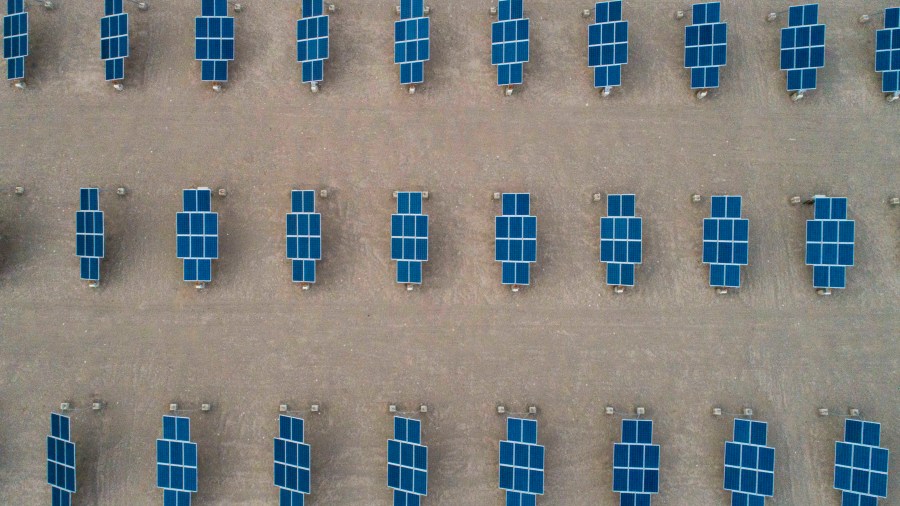The promise of renewables in remote Central Africa

Less than half of the population of Africa can rely on flicking on a switch for light, heat or cooking, and that, of course, limits technological advances in banking, education and health care.
But apart from the fossil fuel-heavy grids most of the rest of the world relies on, microgrids powered by solar and wind energy have real potential for accelerating development, particularly in Central African countries, an International Energy Agency report says.
Michaël Aklin, a professor at the University of Pittsburgh who researches energy policy, told me that the renewables-first approach can work — with some caveats. The following is an edited transcript of our conversation.
Michael Aklin: I’ve seen attempts to almost helicopter-drop solar panels into rural areas. Without any local buy-in, this doesn’t work very well, because one challenge, for instance, is that many people would like, ideally, to have access to the grid, and feel that these smaller systems do not quite provide the kind of services they were hoping for. I think what really needs to happen is a lot of bottom-up involvement from these local communities to tell other people what their needs exactly are so that these can be met the best and most effective way as possible.
Jack Stewart: In your experience, what is an effective installation on maybe a household or a village or a town level — exactly what would that look like?
Aklin: These needs vary quite a bit across very different settings. I think that’s precisely why renewable off-grid technologies are potentially so powerful — we can really use them and tailor them to match what people really can use them for. That’s the big difference to the grids, because the grid is this one-size-fits-all type of approach. Every house here in the U.S., for instance, once you’re connected, you have about the same type of services that you can use. But in some of these countries, it’s going to be very helpful to be able to adapt the technology to their financial means. As a result, you can really make the best use of that without having to go through the high costs imposed by extending the grids.
Stewart: Obviously, some countries, like China, that make solar panels, see a potential new market here. But are there other global economic gains that we could see by the transition to a different type of electrical infrastructure?
Aklin: This has really serious consequences on how these families, these villages, how much they can really produce. Think about any kind of business — if you have a small grocery and you want a fridge, you need power; you need artificial lighting to be able to operate after nightfall. I think what is really going to be the most transformative effect of these technologies can come from allowing places that would otherwise be fairly unproductive from an economic standpoint to suddenly really be able to use their potential and become much more productive that way.

Related links: More insight from Jack Stewart
A recent International Energy Agency report exploring these questions is worth reading. It said Africa is going to become increasingly influential in shaping global energy trends over the next two decades because it’s undergoing the largest process of urbanization the world has ever seen. The number of people living in Africa’s cities will expand by 600 million — that’s more than the increase in China. So energy demand will grow.
Brookings also has some incredible visuals in a report on energy in Africa, which are worth clicking through. For example, one graph highlights the cost burden of powering a refrigerator for a year as a percentage of gross domestic product per capita. In the United States, like in France and the United Kingdom, it’s zero. In Liberia, it’s 4%. It’s all Central African countries at that expensive end of the chart.
We talked about microgrids on Marketplace Tech earlier this month. There are communities in the U.S., particularly here in California, where people faced intentional electricity outages to try to reduce the danger of a power line sparking a wildfire. It’s another example of a situation where solar panels and batteries can reduce reliance on an unreliable grid.
The future of this podcast starts with you.
Every day, the “Marketplace Tech” team demystifies the digital economy with stories that explore more than just Big Tech. We’re committed to covering topics that matter to you and the world around us, diving deep into how technology intersects with climate change, inequity, and disinformation.
As part of a nonprofit newsroom, we’re counting on listeners like you to keep this public service paywall-free and available to all.
Support “Marketplace Tech” in any amount today and become a partner in our mission.




















